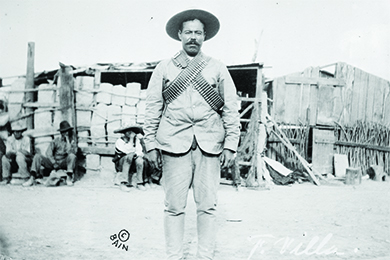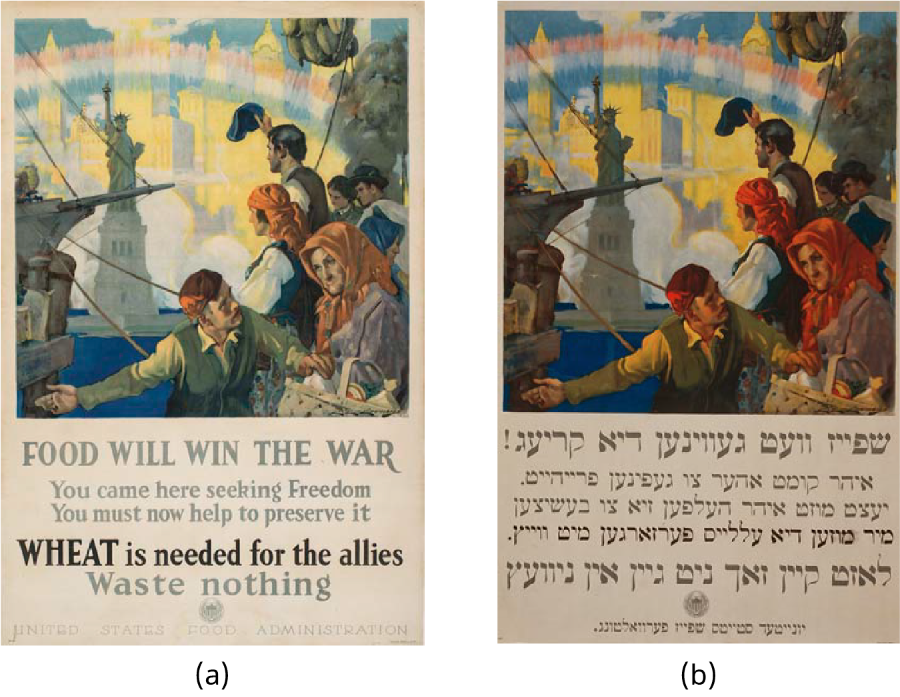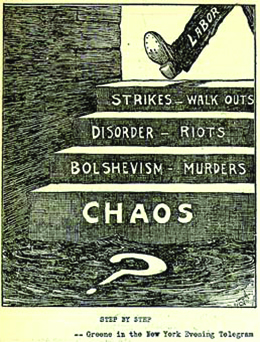Chapter 23: Americans and the Great War, 1914-1919
1/31
There's no tags or description
Looks like no tags are added yet.
Name | Mastery | Learn | Test | Matching | Spaced |
|---|
No study sessions yet.
32 Terms

In the 23.4 “My Story” article, Sgt. Charles Leon Boucher recounts
trench warfare

Figure 23.9 showed government propaganda to
unify all Americans behind the war, including immigrants
The Eighteenth Amendment did what?
prohibited the manufacture, sale, and transportation of intoxicating liquors
President Wilson utilized which act to increase the number of American soldiers?
Selective Service Act
Which immigrant group faced a backlash and discrimination during World War I?
German
The last Progressive cause to achieve success in 1920 was
women's suffrage
At the Paris Peace Conference, which Woodrow Wilson-proposed idea did other world leaders embrace?
League of Nations
The U.S. Senate did NOT ratify the Treaty of Versailles and opposed
Article X
Although Woodrow Wilson espoused an idealistic foreign policy based on morality, he sent American troops into all the countries listed EXCEPT
Colombia
To show patriotism and pay for the war, the government campaigned for the people to do what?
buy liberty bonds
World War I or the Great War started when
a Serbian nationalist assassinated the heir to the Austro-Hungarian Empire, Franz Ferdinand
During the war, African Americans
moved from the South to northern cities, part of Great Migration
During the war, women found new opportunities in which industries?
railroads and factories
Which new laws suppressed freedom of speech and dissent against the war?
Sedition and Espionage Acts

Figure 23.21 highlights the Red Scare and communist infiltration of what?
labor unions
With the end of World War I, the 1920 election of which Republican brought a “Return to Normalcy”?
Warren G. Harding
The Triple Alliance (also known as the Central powers) included
Austria-Hungary, Germany, and the Ottoman Empire
Domestically, race riots broke out where?
Chicago, 1919 and Tulsa, 1921
I was created to rally support for the Great War (World War I), George Creel created a multimedia public relations campaign. Eat a “liberty dog,” no frankfurters here. What am I?
Committee on Public Information (CPI)
After Germany sank the Lusitania, President Woodrow Wilson responded with
a policy of neutrality
The United States was NOT a member of which multi-national organization?
League of Nations
The Great War (World War I) introduced devastating new military weapons in the form of
U-boats (submarines) and poison gas
Which U.S. Supreme Court case defined the “clear and present danger” doctrine?
Schenck v. United States
Triple Entente
France, Great Britain, and Russia
Triple Alliance
Germany, Austria-Hungary, and the Ottoman Empire
Woodrow Wilson
League of Nations and Fourteen Points
Henry Cabot Lodge
led opposition to Treaty of Versailles
Farmeretts
women who took over agricultural enterprises and farms
Harlem Hellfighters
segregated black unit who fought in France
In addition to Great Britain, U.S. allies in the Triple Entente included
Russia
During World War I, Congress expanded the powers of the presidency and the Wilson administration made which change that is still with us today?
daylight saving time
Which key events moved President Woodrow Wilson from neutrality to war?
Zimmerman telegram
the return to unrestricted German U-Boat attacks in 1917
U.S. economic and cultural ties to Great Britain